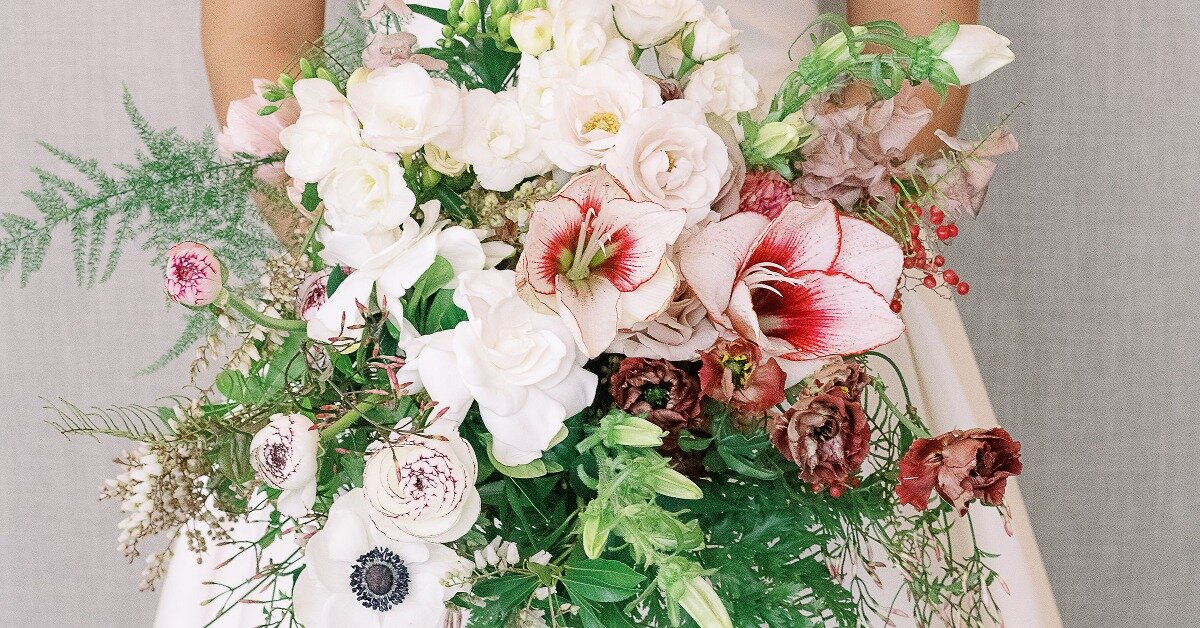Seasonal Design Highlight: Ethereal Dandelion Headdresses
In Holland during the summer of 2020, I studied the characteristics and properties of dandelions. They fascinated me so much that I saw new possibilities to design headdresses using them at different stages of their life—from the plant with seeds to the plant without seeds.
The scientific name for dandelion is taraxacum officinale. It is often considered a weed, but I have learned a lot about the richness of weeds. They are not only weeds.
Did you know dandelions have superpowers? The flower, roots, and leaves have multiple therapeutic qualities. In fact, the name dandelion derives from the Greek taraxos meaning disease, and akos, meaning remedy.
In this feature, I will walk you through the ingredients as well as tips for making these ethereal headdresses yourself!
Dandelion with Seeds Headpiece
Ingredients and Supplies
8 dandelion heads—ones that have sprouted in the last 24 hours
Hairspray
Clothes hangers
Clothespins
Designing Tips
Try to work as slow as possible.
Dandelion seeds are so aerodynamic that it is almost impossible to move the plant without them falling off. That is why I recommend collecting them as soon as the head has sprouted (or no longer than 24 hours if possible!).
Think more about the artistic design than the accessory itself.
Instructions for Your Dandelion Seed Headpiece: Step By Step
Before working with these dandelion heads, they should be treated for weeks in order to strengthen them.
Carefully hang them upside down on clothes hangers using clothespins.
Store them in a dry, enclosed place.
For 4 weeks, spray them with a light mist of fixing lacquer (or hairspray), always do so at a safe distance, as gently as possible, and avoid any sudden movements. The fluffy white heads patiently receive their treatment.
After approximately one month, you will be able to assemble the design. The stems may have retained some greenness but are now stiff enough to remain straight, and the heads are strong enough not to fall apart when moved.
Finally, put them in the hair at different levels! Use the shape of the hairstyle as a base. Perhaps working with a bun hairstyle produces the best results. The tighter the bun is, the easier it is to attach the dandelions.
Seedless Dandelion Headpiece
Ingredients and Supplies
20 dried dandelion stems
A bunch of wild dried grass in a beautiful golden color
Wire, 0.3 mm thick
Gold floral tape
Gold spray paint
Hair clips
Design Tips
The more organic the dandelion stems are, the better. Avoid using totally straight stems.
The grasses I have used all have a very straight stem and their tops are shaped like large golden clouds, almost like drops of golden vapour. That’s why I think they go well with the dandelions and their twisted stems. Every dandelion should look different, with different curves and stem lengths.
It is a perfect headdress for alternative brides or special fashion shows.
Seedless Dandelion headpiece instructions
Paint the seedless dandelions golden and wait until they are completely dry.
Separate the dandelion stems and wild herbs and grasses into two or more similarly sized bunches.
Wrap wire around the stem’s base using the 0.3 mm thick wire. Each dandelion stem should be wired individually. Grasses can be wired in small groups. They add a golden glow and a sense of movement.
Once done, cover the wire with gold floral tape.
Join the bunches by their ends, as if they were bouquets, using the gold floral ribbon.
Separate the stems carefully, only moving the base of the stems.
The gold floral tape is very delicate. For this reason, it may be advisable, once the design is finished, to give the base of the stems a thin coat of gold spray.
Depending on how you would like the headpiece, you can use two or more bunches of plants. Put them on the head or hair as a large headdress or as a double headdress, for example.
The double headdress sits above the ears. It can be placed in the hair horizontally, like two large golden wings, or vertically, like two large lights.
The position you choose will depend on the characteristics of the wearer’s hair and the style you’re looking to highlight. The headdress is voluminous and extremely light.
To create a large headdress (like the one pictured above), you’ll have a shape similar to an open peacock’s tail. This headdress contains significantly more dandelion stems than the double headdress, and the stems are larger and much more curved.
This increase in volume and quantity gives a lot of strength and impact to the final design.
Designing with a plant in its different life stages teaches us to appreciate every organic stage equally—not only when the plant flowers, bu also when it transforms into a big silver flake, when it becomes naked without seeds, and when it dries up.
These different physical states are all important. All are equally necessary, and all are beautiful. The same happens with human life, and it is magical.
Photography Credit
Model: Wies van Beest, furniture designer and piano artist from Holland
Photo: Ernst Lallleman, visual content manager









